
What Did Dorothy Eat?
And The Place Author L. Frank Baum Found Inspiration For His Emerald City
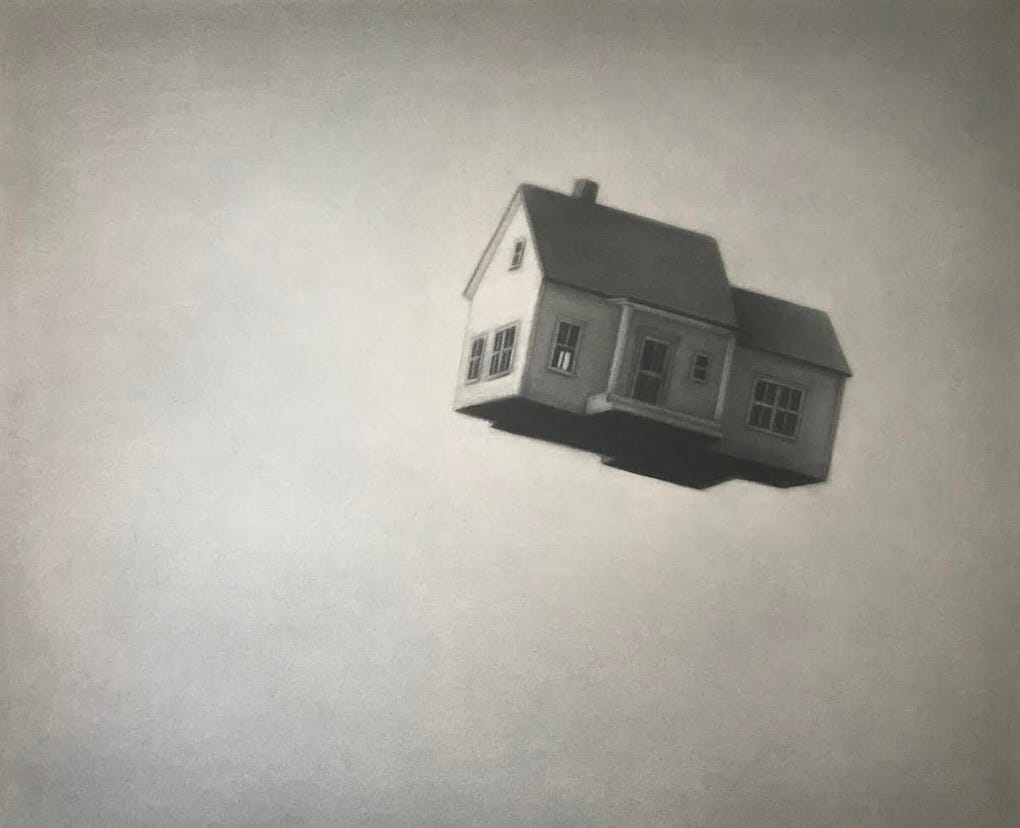
In 1962, the only parents on the block who had a color TV lived across the street from us. Their daughter, Lily, was my friend so I got the big invite from her mother: come watch The Wizard of Oz with us. At eight-years-old I was as awed as Dorothy opening the front door to Oz when the television screen went from black and white to color. What a moment!
In a case of “saw the movie, didn’t read the book” I finally got around to it six decades later.
What prompted this? I’ve been reading and researching so much about the 1893 Chicago World’s Fair that I stumbled across one fairgoer in particular who visited the “White City” repeatedly.
L. Frank Baum, author of The Wonderful Wizard of Oz, was captivated by it. He lived in Chicago with his wife, Maud, his mother-in-law, the writer and activist Matilda Gage — who was a powerful influence on him — four sons and the family dog.
Frank made sure he was at the World’s Fair on opening day May 1st, and watched as a parade of grand carriages brought President Grover Cleveland, Chief Architect of the exposition Daniel Burnham, unofficial First Lady of Chicago, Bertha Palmer and other officials and dignitaries to Jackson Park. They welcomed the world to the magnificent ‘City Within A City’.
That night, President Cleveland threw the switch on the work of Nikola Tesla and George Westinghouse that illuminated the White City in spectacular fashion.
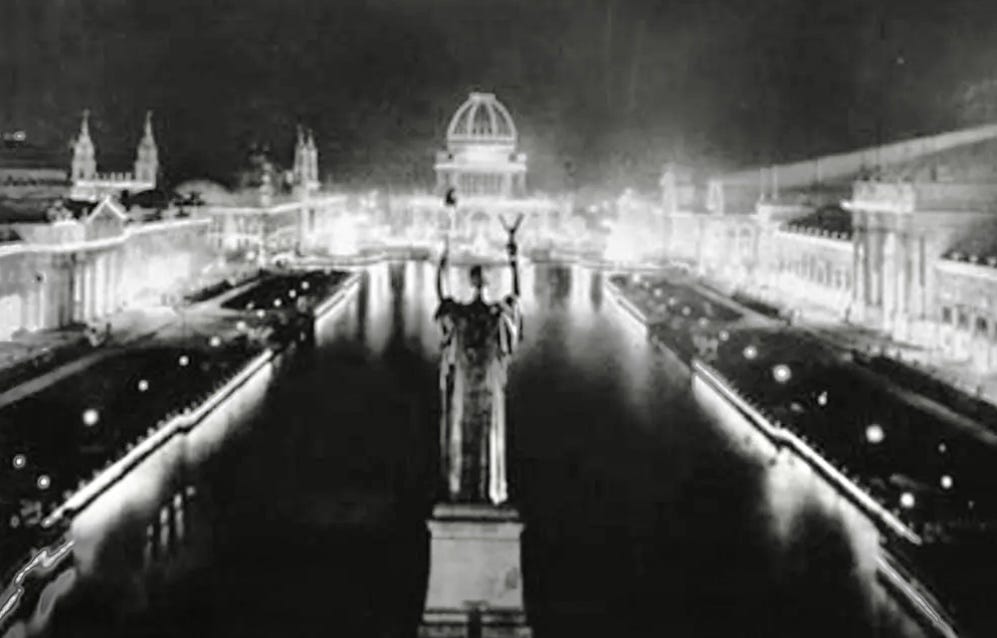
In her biography of Baum, Creator of Oz, Katharine M. Rodgers has this to say:
The romantic beauty, as well as the technological magic of the White City must have helped to inspire the Emerald City of Oz.
It’s fountains, domes, minarets, spires and fluttering banners suggested the architecture of Emerald City.
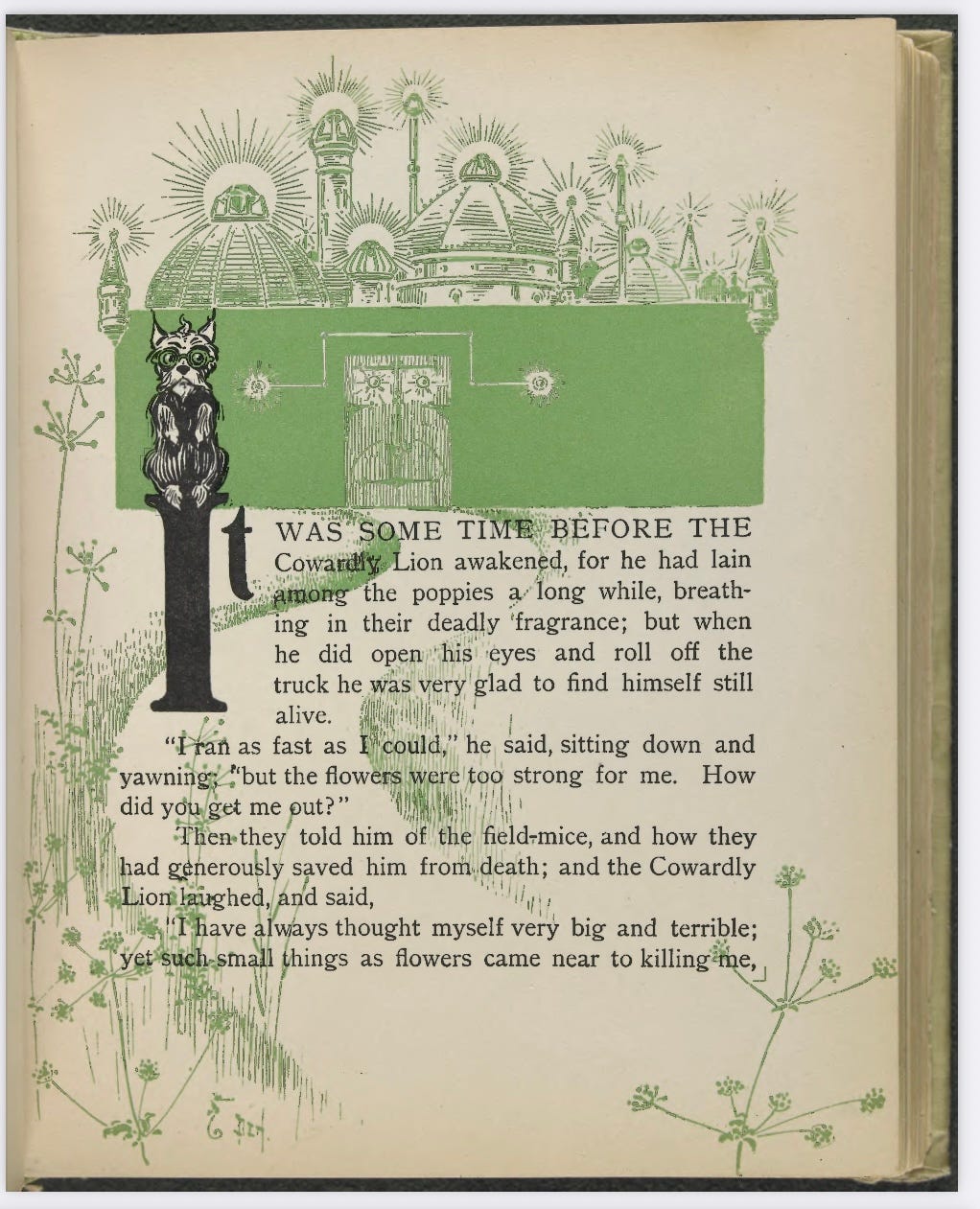
In the Humboldt Park neighborhood of Chicago there is a yellow brick road and a mosaic that reads “There’s No Place Like Home.” It marks the site where the Baum house stood and where Frank wrote The Wonderful Wizard of Oz. The mosaic, by artist Hector Duarte, features the modern Chicago skyline, and is a brilliant Emerald Green.
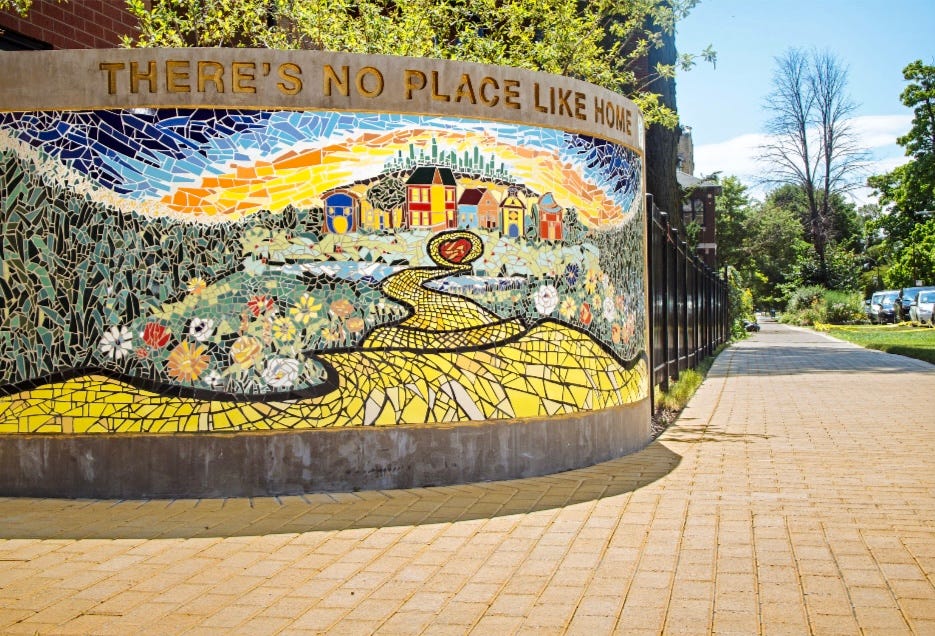
Dining En Route to the Emerald City
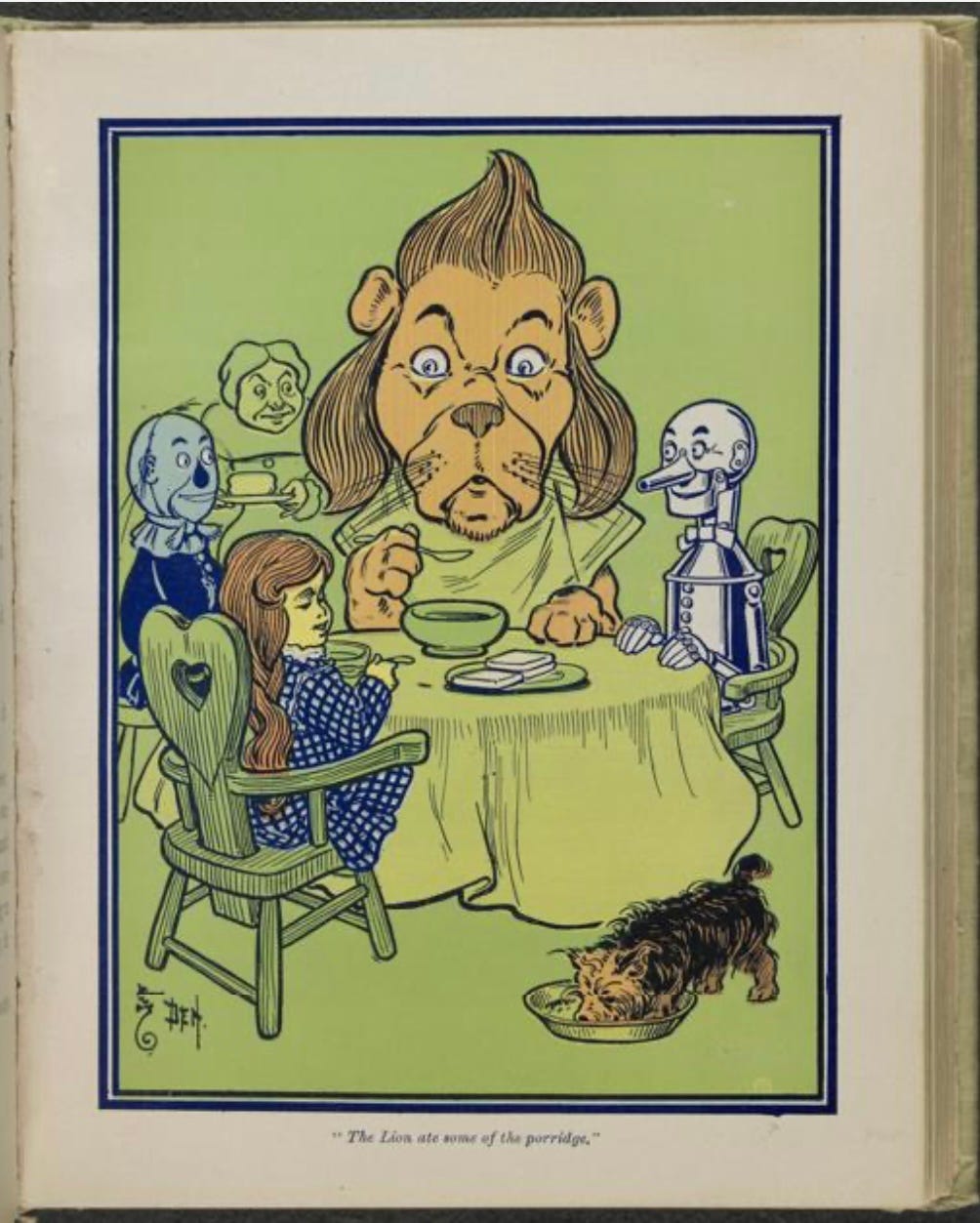
The terrific
who writes about children’s books in her newsletter, had this to say about the The Wonderful Wizard of Oz:It’s impossible to talk about The Wonderful Wizard of Oz as a book without acknowledging the movie. But if you can, for a moment, set aside what you know about the classic film.
Themes of friendship and loyalty, perseverance on a long journey and following one’s heart are quietly but powerfully tucked into an exciting story of adventure, danger and transformation.
It’s a familiar story, but what’s on the screen isn’t the whole story and discovering that is a delightful experience. — Sarah Miller
And the whole story includes a lot of stops along the way to eat.
Dorothy spends time worrying about, finding and then enjoying the food she’s found. The first thing she grabs is a loaf of bread from Auntie Em’s cupboard after crashing in Oz, puts it in her basket and in this first part of her journey rations pieces to feed herself and Toto — she always makes sure there is enough for Toto.
She loves the luscious peach and plum trees in Oz and there are nuts for snacking, too. She’s grateful that the Tin Man and Scarecrow don’t eat. But the Lion is another story. When Dorothy is hungry he offers to kill a deer for them to cook over the fire. The Tin Man is horrified. Dorothy has nuts for supper.
But the Lion went away into forest and found his own supper, and no one ever knew what it was, for he didn’t mention it.
For her part, Dorothy was not afraid to ask strangers for food when hungry, and boldly approached a woman for help at a farmhouse near Emerald City.
The woman now called to them that supper was ready, so they gathered around the table and Dorothy ate some delicious porridge and a dish of scrambled eggs and a plate of nice white bread, and enjoyed her meal.
It was around lunchtime when I read this and scrambled eggs and toast with a side of peaches suddenly sounded great to me. Like the Lion, I don’t like porridge.
My method for making scrambled eggs is always the way the late Anthony Bourdain made them. Crack two or three eggs on a flat surface, add to a bowl, whisk lightly with a fork, leaving some white streaks and add a little salt and pepper. Get your pan hot, but not too hot, with foaming butter. Add the eggs and let them set for a bit, and then swirl figure 8’s with your spatula or fork. They are simple and delicious and always satisfying.
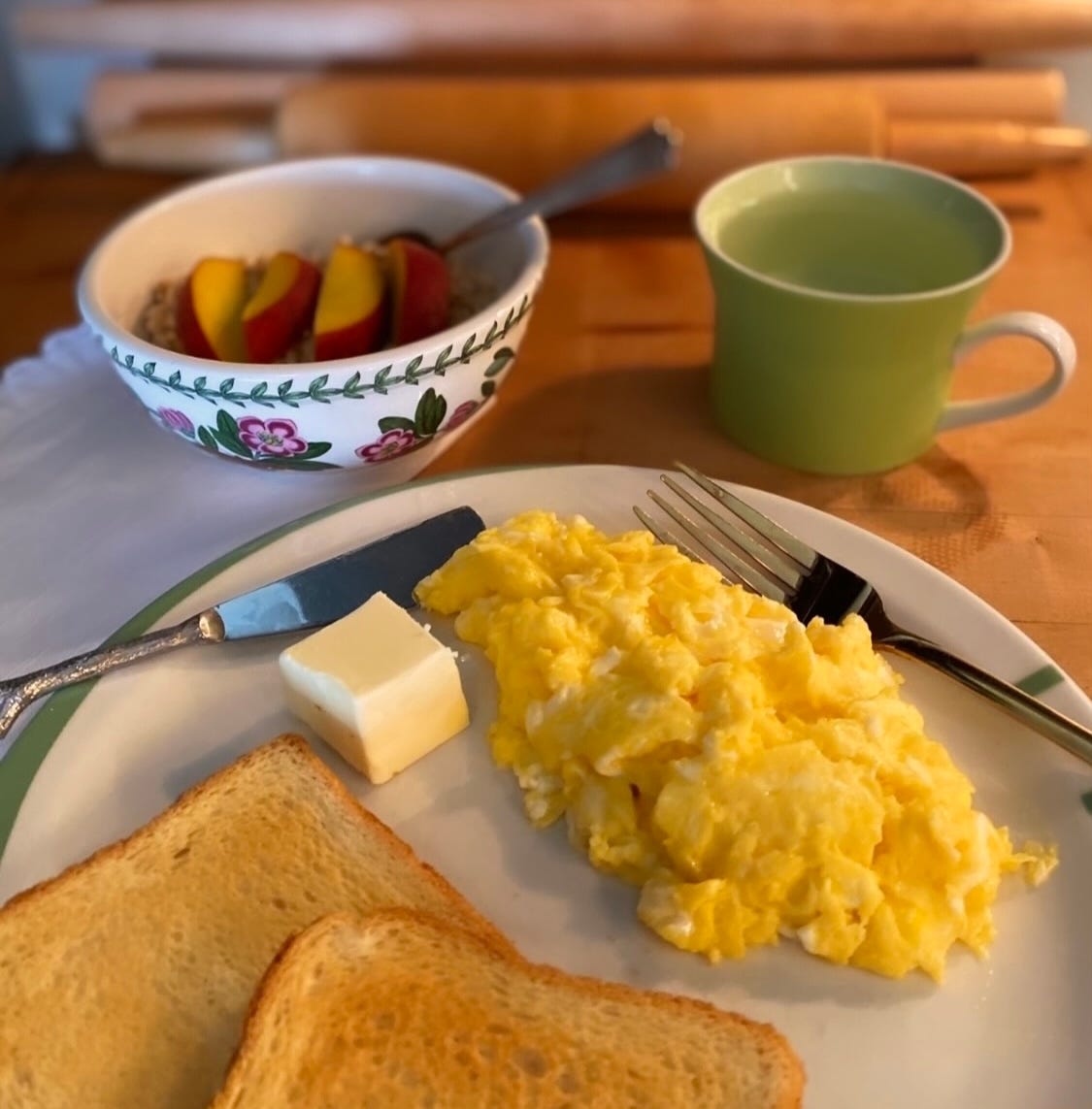
Baum gave Dorothy a hearty diet of fruit, nuts, bread, butter, porridge and eggs, always with clear water from a stream and some cakes served to her along the way. With four sons, he certainly knew something about how children eat.
The American Writers Museum Hosts “The Oz Ball”
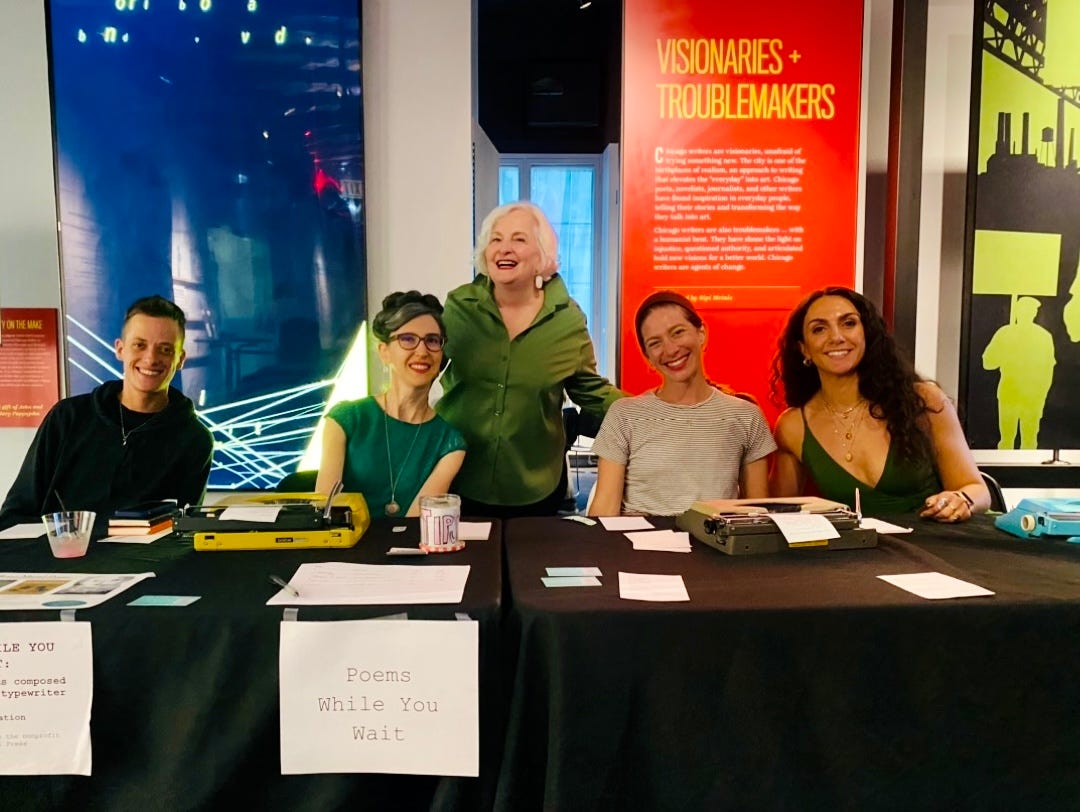
In a lovely coincidence of timing, the American Writers Museum in Chicago hosted a celebration of Baum’s work “The Oz Ball” on August 8th, just as I was working on this piece. What made it an extra-special evening was that Kathleen Rooney, co-founder of “Poems While You Wait” was there with poets, (l to r in photo above) Jonah Radeke, Kathleen Rooney, (then me, standing —I’m not a poet!) Lizzie Bourne and Sabrina Alsaffar. I left with a beautiful, typewritten poem “Emerald City” written by Sabrina — what a keepsake. More with Kathleen next month when her new book From Dust to Stardust is released.
Frank Baum’s Hope For His Work
This is the inscription written by Baum to his sister Mary Louise in 1897 upon publication of his first book, Mother Goose in Prose — illustrated by Maxfield Parrish:
When I was young I longed to write a great novel that should win me fame. Now that I am getting old my first book is written to amuse children.
For, aside from my evident inability to do anything “great” I have learned to regard fame as a will-o-the-wisp which, when caught, is not worth the possession; but to please a child is a sweet and lovely thing that warms one’s heart and brings its own reward.
I hope my book will succeed in that way—that the children will like it.
— Frank Baum, 1897
L. Frank Baum was forty-four-years-old when he published The Wonderful Wizard of Oz in 1900. He wrote fourteen Oz sequels, countless other books, poems and articles. The film adaptation of The Wonderful Wizard of Oz in 1939 is one of the most successful and beloved works in American cinema.
I think The Wonderful Wizard of Oz is pretty great, Frank.
It’s a terrific book and I’m so glad I read it. There are a lot of surprises. Spoiler Alert: The Ruby Slippers are actually Silver. Ruby Slippers just showed up better in Technicolor. Have a good week!
Jolene
Here is a link to the PBS series “American Oz” for more about the 1893 World’s Fair, The Wonderful Wizard of Oz , Chicago and a full biography of L.Frank Baum. Link: AmericanOz
Sources:
Baum, L. Frank. The Wonderful Wizard of Oz. Chicago, George M. Hill, 1900.
Rogers, Katharine M. Creator of Oz. New York, St. Martin’s Press, 2002.
Library of Congress
Smithsonian Magazine
Block Club Chicago
American Writer’s Museum




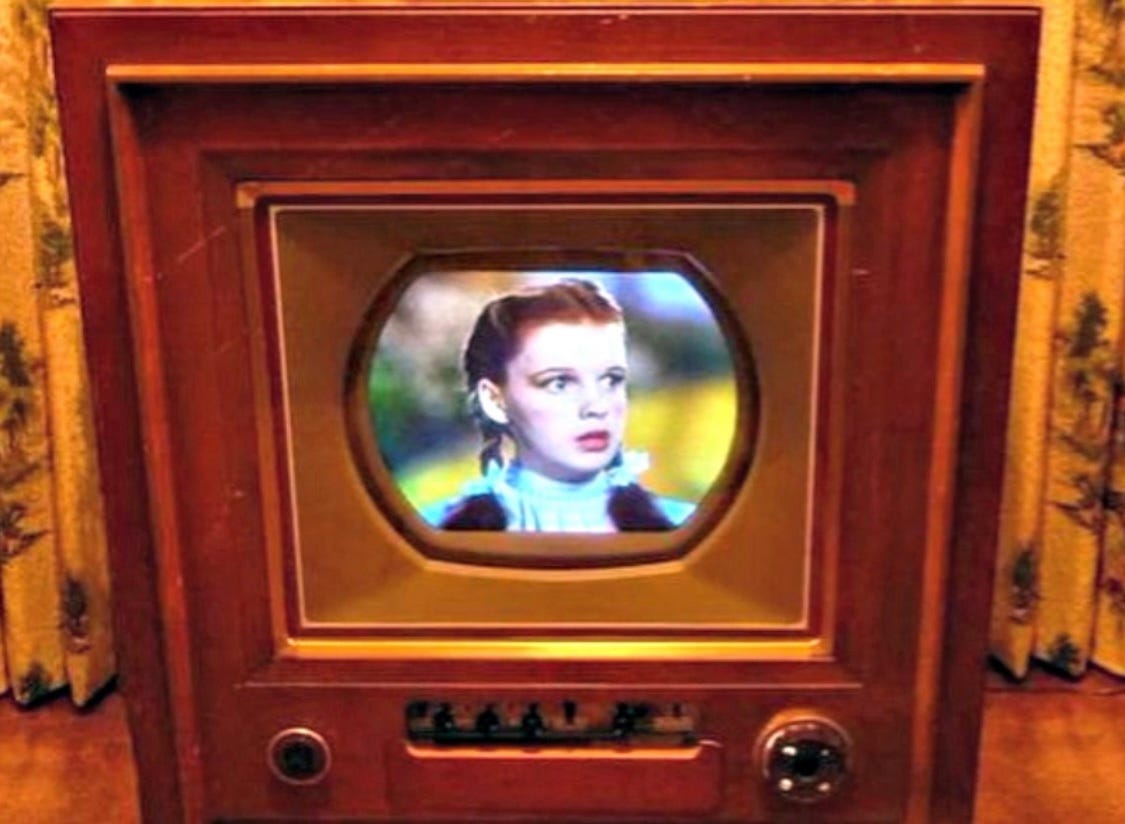
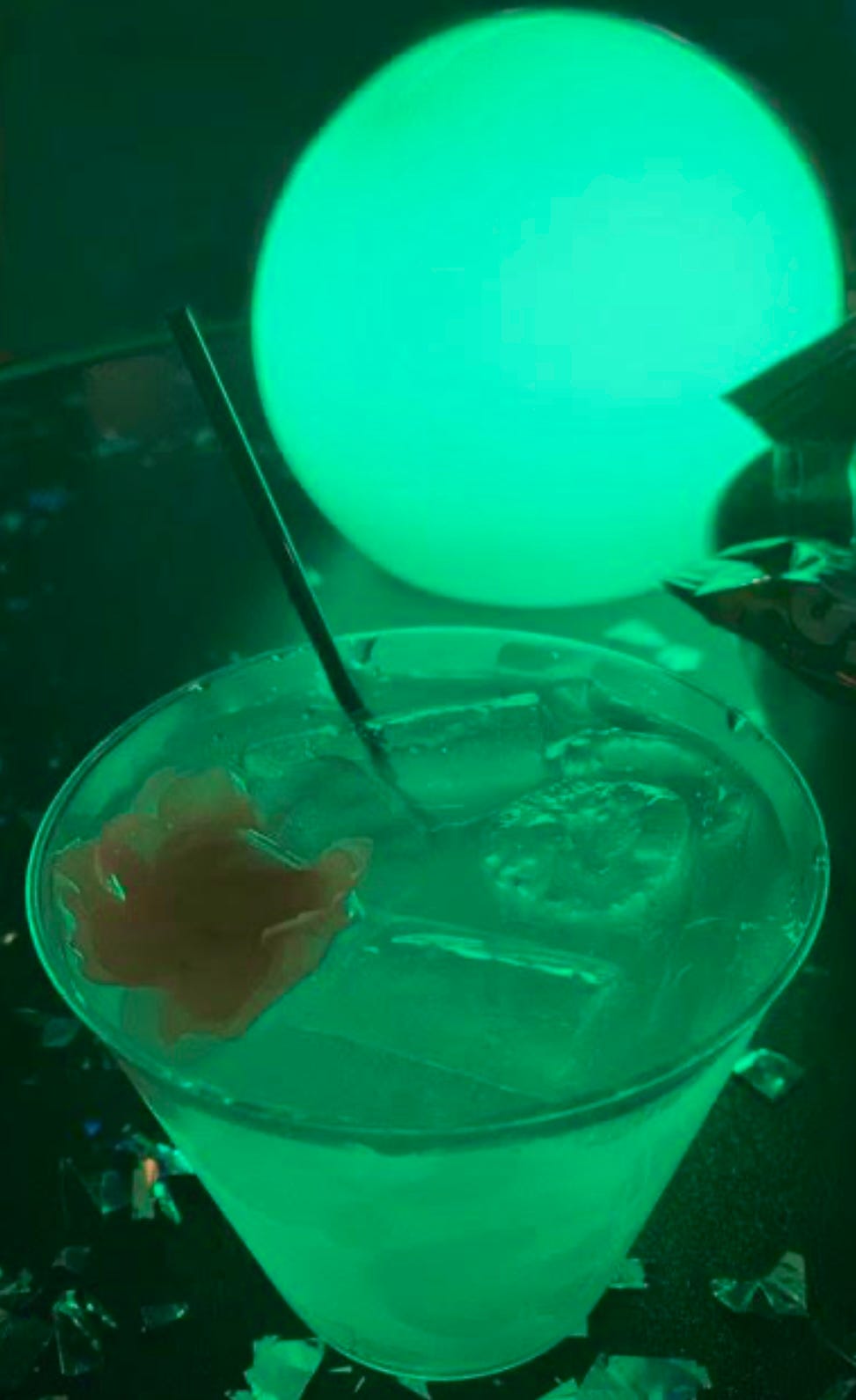
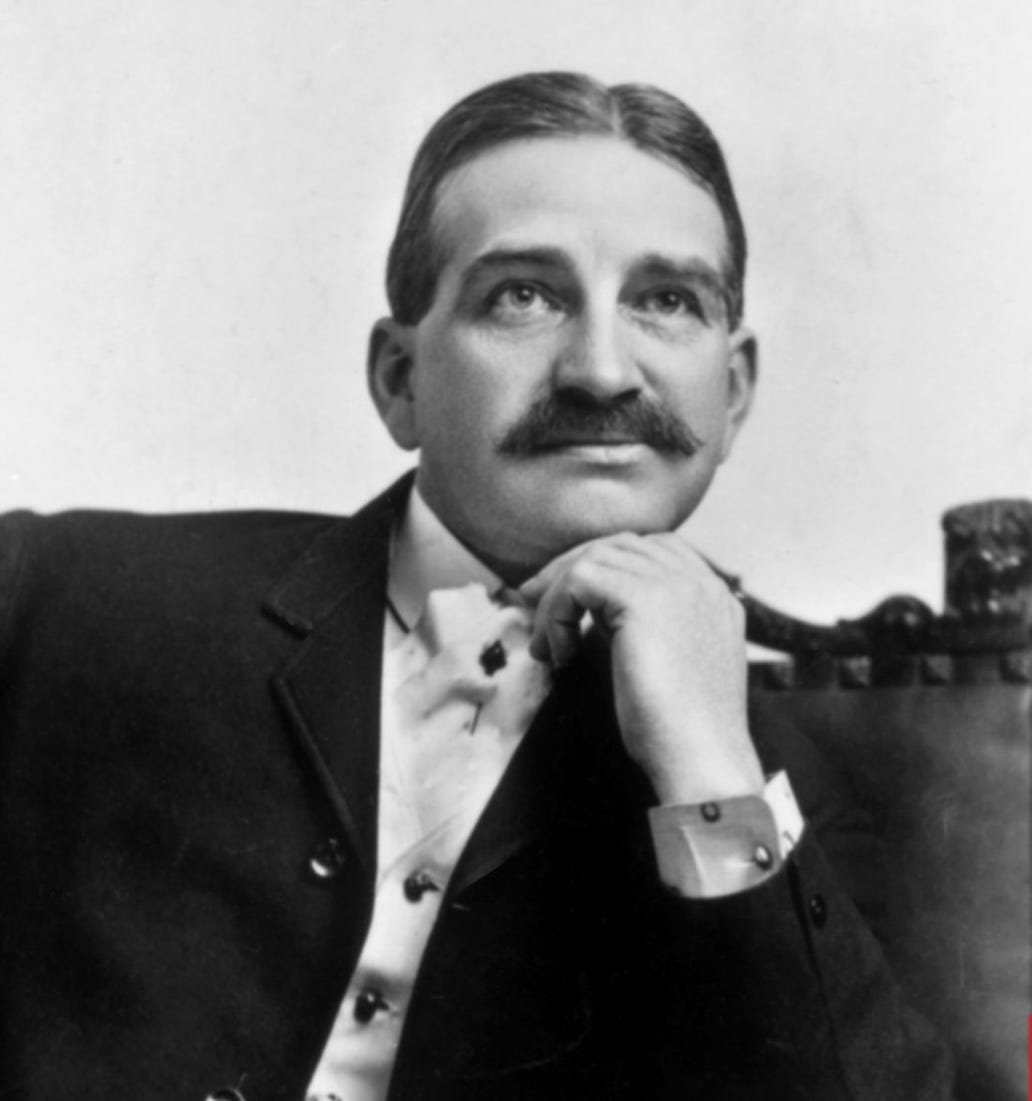







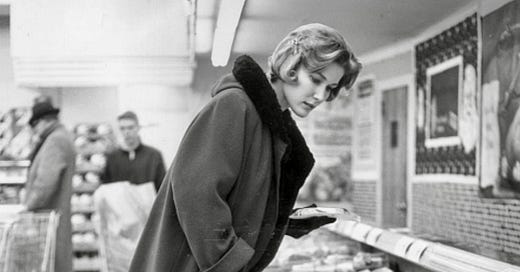


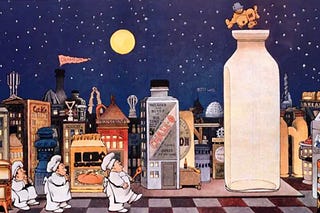
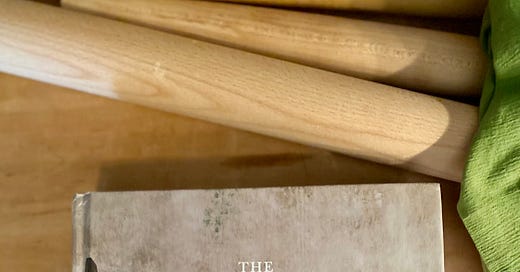

I’ve never read The Wonderful Wizard of Oz either, but I’m going to now. I love when authors write about the food characters eat. Like how Joanne Harris describes chocolate making in Chocolat and the repetition of coffee and sandwiches in Stieg Larsson's The Girl With the Dragon Tattoo. It sets the scene without too much scene setting. This was a fun read, Jolene!
As a child I lived reading mouth-watering descriptions of cooking and meals. Little House on the Prairie had many of those.
I still enjoy reading those as an adult. John Irving's Last Night on Twisted River begins with a wonderful description of preparing breakfast for loggers in New England.
And there are several writers here on substack that publish delightful descriptions of cooking and meals too. ❤️